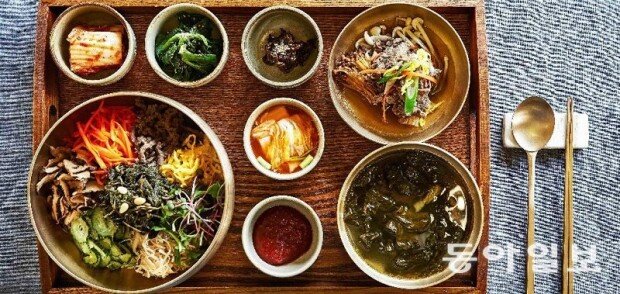One sentence that captures Korean food's uniqueness
One sentence that captures Korean food's uniqueness
Posted April. 05, 2024 07:54,
Updated April. 05, 2024 07:58


When talking about Korean food, one of the most common questions I get asked by foreigners is, "Tell me about Korean food in one sentence." It's a difficult question. So, I looked into how other people talk about it. I saw one scholar talk at length about the meaning of the Chinese characters for Korean food, ‘韓食' (Hansik), especially focusing on the first word 韓, while another went on and on about ‘slow food’ based on the concept of fermentation. Someone else went to great lengths to explain Chinese food, trying to find differences with Korean food, which made me wonder how we can trace the roots of our food to Chinese food. Anyway, after listening to all the different explanations, they all seem plausible, but they aren't compelling as they didn’t give me a full picture of what it is.
When describing the characteristics of something, it would be wonderful if we could explain it in only one sentence. I, too, tried to give answers by talking about many things myself, such as namul (seasoned herbal side dishes) culture, table culture, rice culture, fermentation culture, etc. However, it seemed not compelling. But as I said the following, the other person was convinced, and everything was easily understood: All other food cultures are mostly "What do we eat?" cultures, but Korean food is a "With what do we eat?" culture. Our grandmothers were always worried about "What do we eat with?" when it was time to eat, and when there were special guests or holidays, they would think about what special things to put on the table.
The foreign scholars mentioned that they finally grasped the distinction between Korean cuisine and others. All their inquiries about Korean food were readily satisfied, and they comprehended the Korean pursuit of flavor. They also acknowledged the significance of rice and side dishes, noting the divergence of Korean cuisine from Chinese and Western counterparts. Initially, they even mistook Korean food for Chinese cuisine. Furthermore, they expressed their intention to rectify English expressions, opting to use "banchan" and "guk" instead of "side dish" and "soup," respectively. Nowadays, some Korean food has been transformed and served as dishes in restaurants, but Korean food is not a dish culture. It's a table culture. People gather around the table, add flavors with the help of side dishes, talk, and digest. Our grandmothers and mothers were preoccupied with what to prepare for side dishes rather than a specific dish. We enjoyed delicious soups and Namul made from seasonal wild greens from our home gardens throughout the year.
Understanding Korean food accurately is very important. In Korea, everyone has something to say about food, and everyone considers themselves experts and is interested in it. As a result, there is a lot of misinformation, and we are easily influenced by it, often forgetting the essence. Someone needs to awaken us to the essence and logic of our food and the wisdom of our ancestors who endeavored to follow its principles.







